KEE-RECT-OH!!!
The five gentlemen pictured here
were indeed known as
The Rat PACK!!!!!
(Click on the image to zoom in and out
and scroll down for more INFORMATION.)
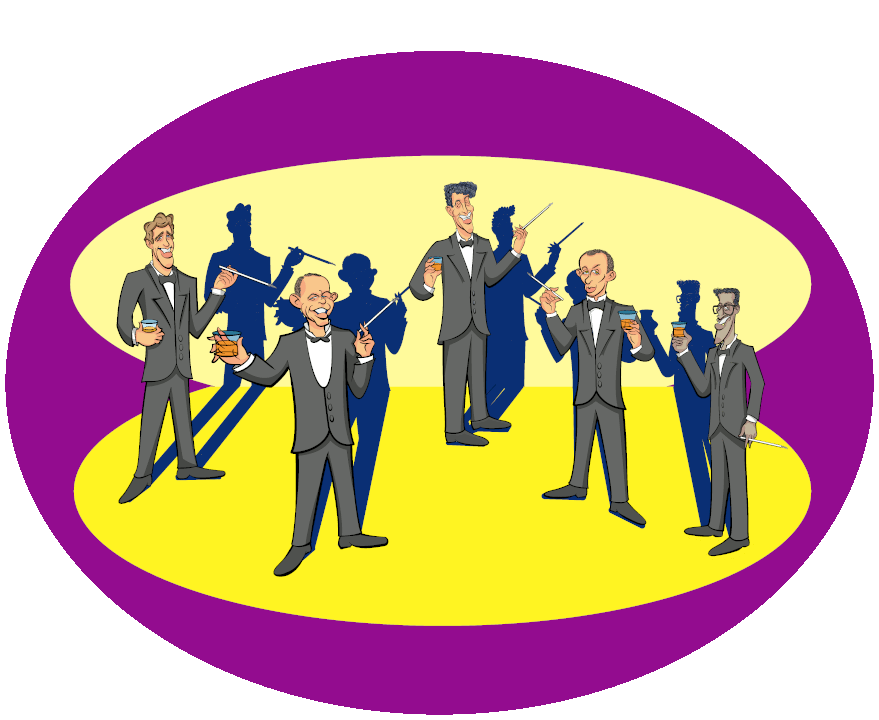
Quail are coveys, lions are prides, gorillas are bands, fish are schools, cows, horses, pigs, camels, and deer are herds, and dogs, wolves, bears - AND RATS - gather in ...
Yes, PACKS.
It must be admitted that there seems to be a pastime bordering on an obsession in inventing new words for groups of animals, all the better to bore your friends with. And sure enough nowadays you will read on various postings that a group of rats is - quote - "commonly called" - unquote - a mischief. However, the word only began showing up at about the turn of the Millennium. Before then the word was - and actually still should be - a pack.
On the other hand, some of the words which look like modern inventions are in fact quite old. For instance, a shrewdness of apes goes back to the late 18th and early 19th century. We also learn there is equal venerability in a lepe of leopards, a bevy of roes, a sloth of bears, a singular of boars, a dryft or tame of swine, a sownder of wild swine, a route of wolves, a harras of horses, a rag of colts, a stud of mares, a pace of asses, a baren of mules, a drove of kine, a tribe of goats, a sculk of foxes, a cete of badgers, a richess of martins, a fesynes of ferrets, a huske or a down of hares, a nest of rabbits, a clowder of cats, a kendel of young cats, and a labour of moles.
Of course, the one true neologism is a flange of baboons. The word was invented by writers of Not the Nine O'Clock News, a British comedy show which ran from 1979 to 1982 and starred Rowan Atkinson, now best known for his portrayal of Mr. Bean in the Mr. Bean series and as the bumbling but well-meaning Inspector Raymond Fowler on The Thin Blue Line. But the word was soon adopted by zoologists and now is common even in academic publications. The traditional collective noun for a gathering of baboons is a troop.
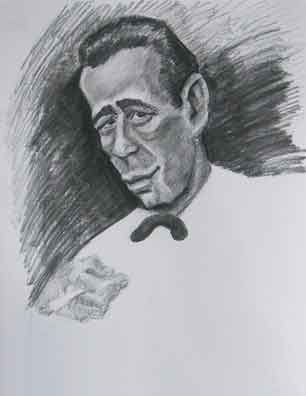
Bogie
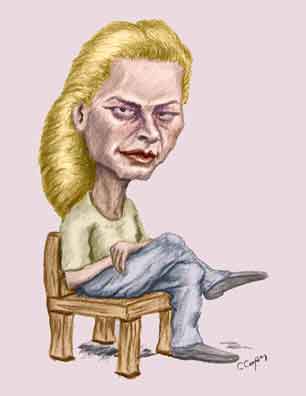
Lauren Bacall
Betty
The origins of the Rat Pack go back into the depths of time. In one telling, there was a group of friends and fellow performers who gathered about Frank Sinatra who were known as The Varsity. As the 40's rolled out and the 50's rolled in, the group congealed to more defined, albeit still informal membership and thus came the Rat Pack.
Today, though, the usual telling is that the original Rat Pack was the group of friends who in the late 1940's gathered about the home of - no, not Frank Sinatra - but of Humphrey Bogart and his wife Lauren Bacall. At that time Bogie and Betty (as her friends called her) were living in the upscale neighborhood of Los Angeles called Holmby Hills just west of Beverly Hills.
Actually the pack began forming even a bit earlier and included the writers Dorothy Parker, Robert Benchley, and John O’Hara, librettist Ira Gershwin and his wife Leonore, pianist Oscar Levant, comedian Groucho Marx, singer Lena Horne, director John Huston, actors Spencer Tracy, Katharine Hepburn, David Niven and his wife Hjördis, singer Judy Garland who was then married to Sid Luft, and restauranteur and raconteur Micheal Romanoff. So it was inevitable that the risingest singer of the time, Francis Albert Sinatra - yes, FRANKIE!!!!! of the Bobby Soxers - would become incorporated as one of Bogie's and Betty's Pack.
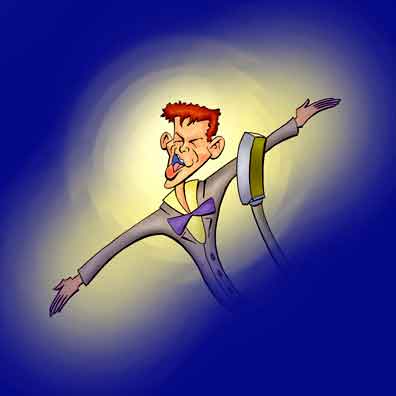
FRANKIE!!!!!
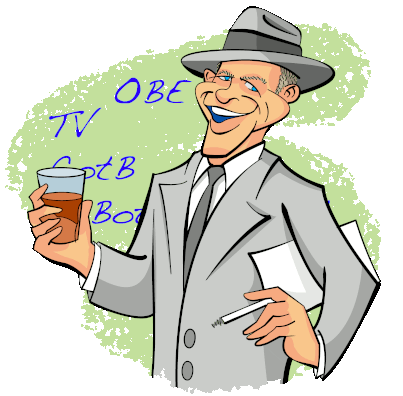
The Chairman of the Board
But not right away. The end of World War II saw the decline of the big bands and with it a slide in Frank's career - a slide assisted by the subsequent rise of Rhythm and Blues and its later incarnation called Rock and Roll (not to mention the less than stellar reviews of Frank's movies like The Kissing Bandit). By 1950, his night club performances were drawing about 10% capacity and according to Columbia Records executive (and later sing-along king) Mitch Miller they couldn't even give Frank's records away.
But then in 1953 Frank landed the role of Private Angelo Maggio in From Here to Eternity. The performance garnered him an Oscar and his records began selling again. Naturally some of the friends of Bogie and Betty wanted to meet the New Frank, and mutual acquaintances brought him over. Frank fit in quite well at Holmby Hills and became a regular.
The friends were known for their vigorous partying and the story is that after a night (or in some tellings a week) of carousing, Frank and the others showed up disheveled and bedraggled at Bogie's and Betty's. Betty took one look at them and said, "You look like a pack of rats!" The name stuck and soon it became an appellation of pride.
The 1950's was a time of change. The Old Guard of celebrities from the Golden Age of Hollywood was moving out to be replaced by the telegenic performers who looked good on the new small screen that was proliferating throught the homes in post-War America. Soon other rising celebrities were being invited to Holmby Hills.
One of the newer invitees to the Bogart's parties was a young man who was small of stature but large in talent named Samuel George Davis, Jr. Although only in his mid-20's, Sammy had been a professional entertainer - singing, dancing, and acting - since he was seven. While still in his teens Sammy became part of the Will Mastin Trio composed of Will, Sammy, and Sammy's dad, Sammy Davis, Sr.
Bogie had seen the Trio perform and after the show he told Will that he and Sammy, Sr., were too old for the act. They should just let Sammy, Jr. take over. Sammy, Sr., and Will saw there was wisdom in Bogie's counsel and soon Sammy Davis, Jr., was making his mark as a solo performer. Sammy and Frank had even met in he early 40's when Frank was singing with Tommy Dorsey's band and so Sammy fit right in.
A big surprise is that the English actor Peter Lawford became a member of the Pack, particularly since he was ostracized before he had the chance to join. Then once he was in, he was soon out.
Peter had been acting in movies since the late 1930's. After moving to Hollywood his rugged leading man looks landed him roles alongside the likes of June Lockhart, Ester Williams, Judy Garland, and Elizabeth Taylor. In 1945 Peter had just finished appearing in The Picture of Dorian Grey when he and Frank met at a party thrown by Samuel Goldwyn, the "G" of MGM. Peter and Frank found they got along all right.
That is, at first, they got along all right. In 1951 Frank married Ava Gardner who was herself a big star. Frank had hoped that Ava would become a more or less typical 1950's housewife and wasn't entirely happy when it became evident that she had no intention of abandoning her career as one of Hollywood's leading ladies.
Ava and her business manager were having lunch at Frascati's restaurant when Peter walked in. Peter had known Ava for years and stopped by to say hello. Ava asked him to have a drink after lunch, and as they sat at a side table, Louella Parsons - the premiere Hollywood gossip columnist - saw the two together. Naturally Louella had to mention the tête-à-tête in her column and mused if Ava and Peter had gotten something going.
When Frank read the column he blew up. Possibly fortified by generous libations he immediately phoned Peter and in a spittle flinging diatribe ordered him to stay away from Ava. If not, then he, Frank, would deal with Peter most severely. Frank was fairly specific and implied that if Peter kept seeing Ava then Peter might find what the Roman author Pliny the Younger called "the parts that are held in reverence" might end up non-functional.
Later one of Frank's friends explained that the meeting with Peter and Ava had simply been a chance meeting of old friends and there was nothing to it. Although Frank seemed to accept the answer, he was still fuming and didn't speak to Peter for five years. But eventually things patched up and Peter became a member of the Pack.
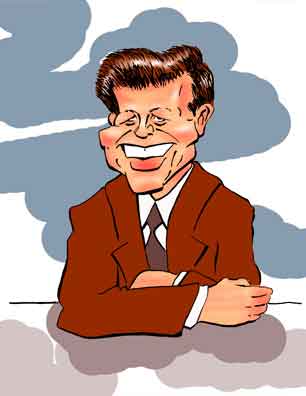
Peter's Brother-In-Law
Historians have debated to what degree that Frank's forgiving attitude which ultimately led to Peter being in the Pack was at least in part because Peter's wife, Patricia, had a brother who was an up-and-coming senator from Massachusetts. At that time Frank was a strong supporter of civil and voting rights and some historians think that Frank's campaigning on behalf of Pat's brother was crucial in transforming the relatively unknown Senator into one of the most popular Presidents in US History. But though the Rat Pack soon became the Jack Pack the transformation was relatively short lived and various scenarios have been advanced to explain why Frank was moseyed out from the highest political circles almost as soon as he was in.
Although the motivations are a matter of historical debate, the actual events that led to Frank's final chagrin with Peter are pretty clear. In late 1962, Peter called Frank to tell him that the President would be making a visit to California and asked if he could stay at Frank's Palm Springs home. Of course, said Frank, and immediately pictured his home as serving as the Western White House. He quickly spent six figures in renovating his house and property to make it fit for extended and repeated Presidential visits.
But then Frank got another call from Peter. The visit, Peter said, was off. It seems that the President - or at least his younger brother who was also the Attorney General of the United States - had concerns about some of Frank's, well, "associates", particularly certain associates who since the 1920's had been developing business interest in certain nightclubs and casinos. What really concerned the administration was the possibility that some these - ah - "associates" might even stop by when the President was there.
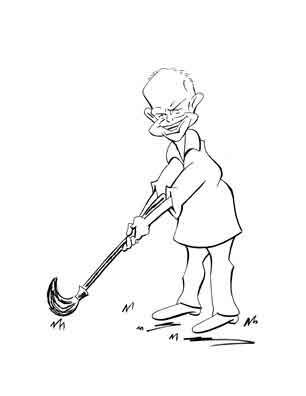
Bing liked Ike.
It was bad enough that Peter had to break the news to Frank. But what really elevated Frank's choler was that the President instead decided to stay at home of Bing Crosby. Unlike Frank, Bing had done nothing to help the President get elected and had even been one of the biggest Likers of Ike. Frank never spoke to Peter again except on one occasion when he needed a big favor from Peter's government contacts.
Joey Bishop had gotten his start in show business when he was working at a luncheonette where he irritated the customers by doing impressions of them. His next job was as a master of ceremonies at what seems to have been a combined Chinese restaurant and nightclub. That job lasted a whole two weeks. Finally he teamed up with two friends as a stand-up comedy act. But eventually his partners dropped out of the business leaving Joey wondering if he would be able to manage on his own.
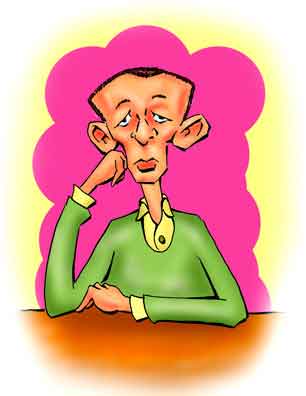
Joey Bishop
Fortunately he was able to land a long term engagement at a nightclub called - this is no joke - El Dumpo in Cleveland. But like many young men in the early 1940's he was quickly drafted into the war effort. Given Joey's professional background he was made part of the entertainment and recreation division at Fort Sam Houston, and after his discharge his newly found contacts managed to get him representation by the prestigious William Morris Agency.
Joey's first job that was arranged by William Morris was a stint at a Greenwich Village nightclub. If not the big time at least he was moving in the right direction. Joey continued to perform in and around New York and was able to land increasingly lucrative jobs.
By 1952 Joey was making $1000 a week and was appearing at New York's famed Latin Quarter. There Frank caught Joey's act and after the show asked if Joey would be his opening act at the Riviera night club.
Joey agreed and in his first appearance he came on stage and looked at the audience.
"What a crowd!" he said. "I sure hope Frank's fans show up."
Frank thought the quip was funny and Joey became Frank's regular warm-up act and part of the Pack.
By the late 1940's, Dean Martin, a former roulette croupier and boxer with a smooth mellow baritone, had moved on to become a successful nightclub performer. But he really hit the big time when he began appearing with the comedian Jerry Lewis who he met by accident on the streets of New York. They later both appeared as separate acts at a nightclub but after the show they entertained the audience together with an impromptu routine. They were a hit and soon Martin and Lewis became the biggest comedy team around.
From 1948 to 1952 Martin and Lewis had their own radio program and quickly moved into the infant medium of television. But their biggest fame - and moneymakers - were from their starring in over 15 feature films from 1949 to 1956.
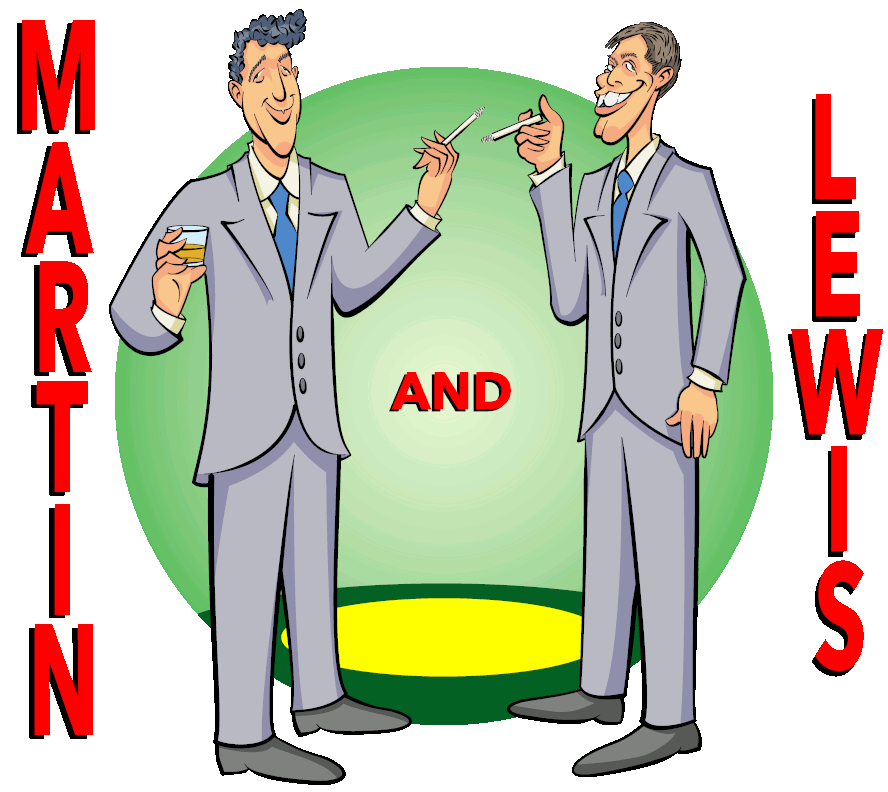
The Biggest Comedy Act Around
Dean, though, eventually chaffed at being the straight man which by definition is almost always playing second baritone to the comedian. Finally fed up with playing who he saw as the same character, he rejected the script of The Delicate Delinquent. Jerry told him they'd have to find someone else and Dean said fine and walked out.
Dean was now able to focus on his singing as well as an independent acting career. He showed his mettle when he starred alongside of Montgomery Clift and Marlon Brando in The Young Lions. But Dean was primarily a singer and with his new found stardom he played Las Vegas where it was inevitable that he would meet Frank and the others. His high living lifestyle fit in well with the Pack and he became a full fledged member.
The Holmby Hills Rat Pack continued until January 14, 1957, when Humphrey Bogart died at aged 57. Immediately Frank stepped up and became the Packmeister. At first the Pack still included the old friends of Bogie and Betty, but soon it was understood that the Official Rat Pack was now Frank, Sammy, Peter, Joey, and Dean. However, if you broaden the definition the membership was a bit more fluid and included a number of their friends. And yes, there were lady Rat Packers such as Angie Dickinson and especially Shirley MacLaine.
Although the Pack appeared together at nightclubs and in concerts, they are now most remembered for their movies. How many Rat Pack films were actually put in the can is more a matter of definition than actual casting. If you count any appearances of at least two of the Pack regardless of how brief, there's over twenty: It Happened in Brooklyn (1947), Meet Me in Las Vegas (1956), Some Came Running (1958), Never So Few (1959), Ocean's 11 (1960), Pepe (1960), Sergeants 3 (1962), The Road to Hong Kong (1962), Come Blow Your Horn (1963), Johnny Cool (1963), 4 for Texas (1963), Robin and the 7 Hoods (1964), Marriage on the Rocks (1965), The Oscar (1966), A Man Called Adam (1966), Texas Across the River (1966), Salt and Pepper (1968), Sweet Charity (1969), One More Time (1970), The Cannonball Run (1981), and Cannonball Run II (1984).
But if you only count the movies which featured Frank and at least some of the others as the principal stars, the number is whittled down to three: Ocean's 11, Sergeants 3, and Robin and the 7 Hoods (where Peter Lawford's role was taken by - get this - Bing Crosby).
Of course, if you have even more rigid standards where you only count movies with all five of the Packers - Frank, Dean, Sammy, Peter, and Joey - there's only two: Sergeant's 3 and Ocean's 11.
The variable casting of the films reflects complex and changeable relationships between the various Packers. By the time of the last combined tour - called the "Together Again!" Tour - came to an end, only Frank and Sammy were the Performing Pack. Although Dean was with the tour at first he left after only six shows due to health problems. Liza Minnelli was able to his place.
It has to be acknowledged that the lifestyle of the Pack was not one recommended by modern health guidelines. The surprise is they managed as long as they did. Peter exited first in 1984 at age 61 followed by Sammy in 1990 at age 64. Dean made it until age 78 in 1995 and Frank finally left the stage at age 82 in 1998. Not surprisingly Joey, probably the least high-living of the High Living Pack, continued well past the Millennium to 2007, age 89.
References and Further Reading
The Sports and Pastimes of the People of England Including the Rural and Domestic Recreations, May Games, Mummeries, Shows, Processions, Pageants, & Pompous Spectacles from the Earliest Period to the Present Time by Joseph Strutt, Illustrated by One Hundred and Forty Engravings In Which Are Represented Most of the Popular Diversions Selected From Ancient Paintings, A New Edition, With a Copious Index,By William Hone, Author of the Everyday Book, Table Book, Year Book, Etc., Thomas Tegg (publisher), 73, Cheapside. 1845, Project Gutenberg.
The Rat Pack: The Hey-Hey Days of Frank and the Boys, Lawrence Quirk, Rowman and Littlefield, 1998.
"'Brother-in-Lawford' was Sinatra’s Key to White House", Bruce Fessler, Desert Sun, October 20, 2015.
"Mischief of Rats", Ngram Viewer.